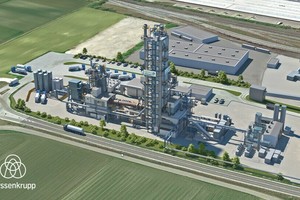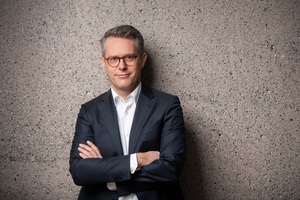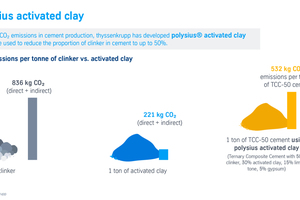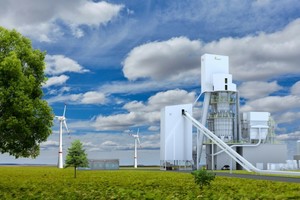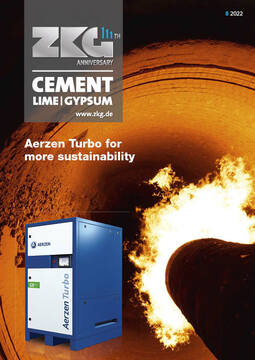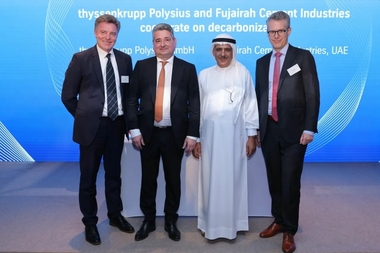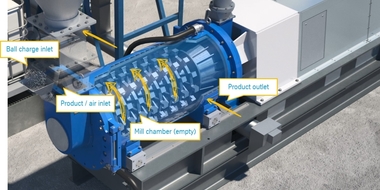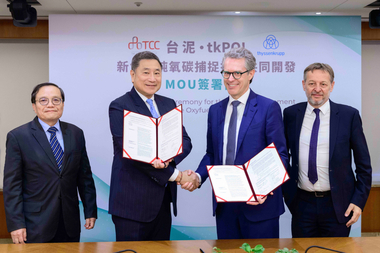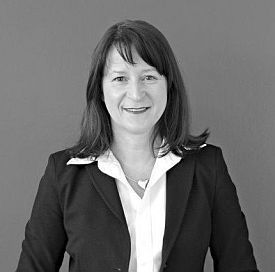Sustainability – the future for cement and lime
In recent years, the market environment for the cement industry has developed considerably more dynamically than was forecast two or three years ago. The focus is on investments in more sustainable production, in particular in the reduction or reuse of carbon dioxide emissions and the reduction of energy requirements. Current political course-setting, not only in Europe, supports and pushes this transformation process. At the same time, there are also considerable uncertainties: These include sharply rising prices due to the war in Ukraine, the increasing expansion of the hydrogen industry and interactions with other industries regarding energy demand or CO2 transport. Pablo Hofelich, CEO of the Polysius business unit of thyssenkrupp Industrial Solutions AG, explains in an interview where he sees the biggest challenges currently facing the cement industry, how thyssenkrupp and its customers are responding to them, and which technical solutions thyssenkrupp Polysius is relying on as part of its grey2green strategy for the transformation to greater sustainability.
First of all, it is important for me to mention that both the plant manufacturers and the cement producers are tackling this issue with full force and that many new processes, some of them in very large plants, are in trial operation or under construction. In principle, however, the investment cycles and the period from the investment decision to the start of production of a new plant are long. In addition, for some fundamental innovations, standards must also be tested, reviewed and adapted by the authorities. This also takes time.
In my view, there are two ways of safeguarding and accelerating this process that has been started: On the one hand, industry and every investor needs a stable and positive investment climate so that innovative investments can be realised and financed. This includes, for example, clarity regarding the continued use or transport of CO2. On the other hand, extended political support, e.g. to increase the share of low-emission cements in construction projects, would secure market demand. The necessary instruments, such as KfW construction subsidies or tender specifications for public-sector projects, would already exist in principle.
The development here is also very dynamic. Take the US: The Inflation Reduction Act of 2022 (IRA) is a landmark US law that, among other things, invests in domestic energy production while promoting clean energy. It includes a price for captured CO2 of US$ 85 per tonne. This is expected to be the lever for significant CO2 reductions in industrial production.
In the European Union, too, the course has been set for sustainable production through the EU Innovation Fund. The European Commission has announced that it will invest € 1.8 billion in large-scale projects, including carbon capture and storage. Of the projects already funded as a result, which include a CCS or CCU component, five are in the cement and lime industry. In the third funding round now starting, the funds will again be significantly increased.
In addition, there are a number of regional initiatives such as the “Münsterland Round Table” in North Rhine-Westphalia. The aim of these initiatives is to bring together politicians, cement producers and plant manufacturers and, among other things, to find solutions for issues such as CO2 capture and the CO2 transport infrastructure.
On the other hand, there are still considerable uncertainties, for example in the area of carbon capture and utilization. If, for example, the EU/RED II regulation currently in the works were to come into force, the use of CO2 from limestone would be practically ruled out from 2035, making investments in green cement plants less attractive.
That’s right. Rarely have the framework conditions underlying investment decisions in “green” technologies changed so quickly. Numerous subsidy programs, new players in the market and technological leaps have to be evaluated by plant operators. But the shift to sustainable production in other industries, as well as CO2 reduction measures in other sectors, are also having an impact on the cement industry’s business models. The demand for energy will increase enormously in the future. At the same time, this demand is to be met as far as possible by renewable energies. It is also unclear how the large quantities of captured CO2 are to be used and transported. How this is ultimately to be realised still raises many questions at present. However, these will determine which locations and which technologies are ultimately lucrative.
Absolutely! In the last 1.5 years we have seen an increase in the CO2 certificate price in the EU from around 30 to at times over € 100 per tonne of CO2. We assume that the certificate price in Europe will remain high in the long term. At present, it is not possible to make a conclusive statement as to how many cement plants the current CO2 price level will provide a sufficient incentive to invest in carbon capture technologies, as transport and storage have not yet been clarified. But one thing is clear: the CO2 in the cement production process comes mainly from the limestone and ultimately cannot be avoided. Since no adequate substitute for cement will be available in the foreseeable future, it is imperative that we address the issues of CO2 capture and further use/storage.
In addition to the dramatic humanitarian, social and political consequences, the war in Ukraine is currently affecting energy prices in particular. Prices for gas, coal and electricity have risen significantly. Higher producer prices and logistics costs affect the business models of all our customers’ investments.
However, the enormous increase in energy prices also has many indirect effects on the business models of the cement industry. Even if it is not to be expected that coal-fired power plants will remain on the grid in Germany in the long term and thus an increased volume of fly ash is not to be expected, the cement industry will certainly “take” the rising volumes in the short term and thus reconsider investments in other clinker substitutes. This is just one example of industrial interdependencies and interactions. Not to mention the economic impact of the crisis on cement demand as a whole.
Yes, many of our customers are flexible and are testing a wide range of technologies in industrial pilot plants. We assume that many cement manufacturers will continue to convert their portfolio to CO2-reduced or CO2-free cements. There are various ways of reducing CO2 in cement: either primary emission avoidance, in particular through alternative fuels or the reduction of clinker in cement, or secondary avoidance by capturing and storing CO2.
Our focus in secondary prevention is on polysius® pure oxyfuel technology. This innovative process for clinker production aims to replace the ambient air in the process with pure oxygen. Compared with conventional plants, CO2 can thus be concentrated in the cement production process and thus captured more cost-effectively. We are currently building the first pilot plant at the Mergelstetten site.
For primary emissions abatement, we offer a range of market-ready solutions. We are constantly adding to these as part of our clear focus on “green” solutions in our R&D area.
For example, we offer a solution for the industrial use of activated clay as an additive for clinker factor reduction. We are currently building our first plant in Cameroon, which will start operations at the beginning of 2023 and will serve as the world’s first industrial reference for flash calcination of clay. The carbon footprint in the production of activated clay is about four times lower than in conventional clinker production.
There is also a high demand for our polysius® booster mill. As an additional grinding stage, it stands for efficient and very fine grinding. It enables customers to produce ultra-high-performance cements or sustainable cements with a clinker factor that is up to five percent lower without losing grinding capacity.
Another good example of ongoing innovation is the commissioning of our first newly developed polytrack® ECO clinker cooler. Operation over the past six months confirms the expected lower energy consumption.
But not only in the cement sector, but also for the lime industry, we are driving the development of green technologies with our new kiln series Maerz EcoKiln®.
Similar to the oxyfuel process in cement, the kiln is operated with oxygen instead of ambient air. In addition, the innovative kiln has an integrated gas separation system that separates the cooling air from the exhaust gas. This ultimately achieves a high CO2 concentration in the exhaust gas very efficiently.
Yes, insofar as the framework conditions for a sustainable transformation of the industry remain positive and allow corresponding business models.

